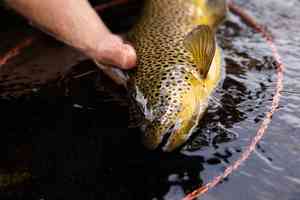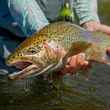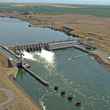A new five-part video series from G. Loomis aims to show the company’s loyal customers how it crafts its fishing rods and how the process is worthy of the Loomis tagline, “Handcrafted in Woodland, Washington.” The series, which launched earlier this month, offers viewers a behind-the-scenes look at the G. Loomis brand and the intricate work that goes into making some of the most reputable fly rods in the industry. The idea, says, G. Loomis Creative Director Red Kulper, is to help the legacy rodmaker’s customers “feel connected” to the rods they use when they hit the water.
“This series is a tribute to the artisans and engineers who pour their heart and soul into every rod we produce," said Kulper says. "The 'Feel Connected' series is an invitation to see and feel the connection between our craftsmen's passion and the exceptional products we deliver."
In a nod to ever-more-competitive fly-rod manufacturing industry — it seems that fly rods featuring the latest-and-greatest tech are launched on monthly basis — G. Loomis produced the video series that doesn’t say it offers technological advances in its products. Through the video series, it shows that tech at work.
“There’s a lot of passion at the factory,” explains Chris Cogbur, G. Loomis’ process engineering manager in the first episode of the series. “The team and the factory are very dedicated to the performance and the innovation of the product. We don’t have a lot of time to waste. It’s a very competitive industry, and we have to innovate and we have to work hard to improve.
“Time isn’t going to wait for us.”

Cogburn and his fellow G. Loomis rod designers are cognisant of the high-end fly rod market’s tendency to boast about new tech, new materials, new tapers and so on. G. Loomis has always been a reputable rod manufacturer, but the overt effort to demonstrate that its engineering and craftsmanship remains at a high level is but a commentary on the industry as a whole.
Today’s premium fly rods are four-figure marvels, and they cost what they cost because of the research and development that goes into a product’s design and manufacture only to be sold to a market that is but a sliver of the overall sportfishing customer base.
Indeed, fly fishers pay more for good stuff — it’s one of the necessary evils that industry tries to explain away every time another $1,200 fly rod hits the market. But that’s the key. There is a market for quality fly rods — anglers are willing to pay top price for rods that perform. If they weren’t, we wouldn’t continue to see a rocket-paced increase in retail prices for premium equipment.
Through its video series, G. Loomis does its part to justify the end result — the transaction at the fly shop cash register once a rod hits the market.
To its credit, the company does, indeed, bring viewers into the guts of the G. Loomis factory, where it rightfully boasts the company’s long history of employing and keeping fly-rod builders. But things change over time. Employees retire. New blood comes aboard. It’s a challenge, says Grant Wilkerson, a G. Loomis product supervisor, to foster a work environment that inspires employees to meet the standards that G. Loomis has always maintained.
“When I first started working here, the average work experience was 15 years,” Wilkerson says. “A lot of people had 30, 25 years of experience. So there was a very family feel when I first started working here. I’ve tried to maintain that as people have left. We’re still trying to keep that family feel by talking to employees every day and taking their families into account.”
It’s likely that the company’s long history of making quality rods does, indeed, come down to the people on the factory floor. That’s where the challenge of maintaining and even improving standards comes into play. But, like most high-end rodmakers, with growth comes more challenges.
“Building one rod is easy,” Cogburn says, “but building 500 rods, identical, that’s the trick.”
Through the “Feel Connected” video series, G. Loomis hopes to pull back the curtain on the company’s manufacturing process, and allow its customers — old and new — to get a glimpse of the company’s culture.
“We all look out for each other. Every individual has a chance to influence the course of the business. It’s a powerful recipe for both business and personal success,” Cogburn says.
And, of course, the end result, if everything goes as planned, is an excellent fly rod ending up in the hands of an appreciative customer.
“‘Handcrafted in Washington’ means our rods are designed, developed and built in the Pacific Northwest by the hands of anglers for anglers,” says Production Manager Matt Wirkkala.
G. Loomis has been building fishing rods since 1982.































Comments